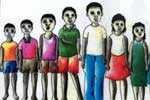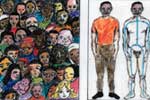(Click on the project for more information)

African American Sexual and Reproductive Health Project

Latino Sexual and Reproductive Health Project

Bangladesh Sexual and Reproductive Health Project

Haitian Children and Youth Rights Project

Haitian Environment-Agricultural Education Project

Ugandan Sexual and Reproductive Health and Gender-based Violence Project

KEY CONCEPTS
Research and education are applied in nine key concepts:
Culture:
Culture is how people define, interpret and give meaning to their lives. Ethnographic research is conducted in the first phase of these programs to understand peoples' experiences within their respective culture. Composite stories are developed from the ethnographic research data. The stories show people's interactions and conversations within the content and context of their culture.
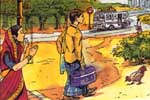

Human Interactions and Relationships:
Sexual interaction is experienced and negotiated within human relationships. While the transmission of sexual disease is usually the consequence of a dyad, surrounding human interactions strongly influence the nature of sexual interactions. These programs focus attention on the nature of these interactions and relationships.

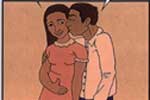
Storytelling (Narrative discourse and script):
Storytelling is a ubiquitous, universal means of human communication. Storytelling is the focus of these programs. Stories are told through narrative description and dialogue. The stories are pictorialized in large, colorful images. The back of each page in each story contains instructions for the facilitator, narrative description and dialogue while the front contains dialogue.



Public and Private Composite Stories:
Stories of people's interactions are reflective of their public stories and their intimate or private stories. These two aspects of people's interactions are juxtaposed within one story. The top-story shows the public story and the under-story shows the private story or hidden.
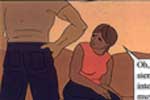
Gender:
Many human interactions, particularly sexual interactions, have to do with gender or the socially prescribed expectations of females and males. The stories emphasize how gender and power in human relationships increase people's vulnerabilities. The perspective of the narrative description and discourse between characters reflects a gendered perspective.


Imagery:
People identify with visual images that reflect their culture and experience. The pictures or images in the stories are representational and reflective of how people might look and act in real-life situations. The appearance of the characters and the environment in the stories reflects culturally appropriate images.



Language:
How people speak and what they speak about defines who they are. People strongly identify with people who speak like themselves. The narrative dialogue between the characters in the stories is written in the language of the people for whom the programs are for. The language of the characters is reflective of the way they speak in real-life situations.



Learning:
The program integrates storytelling and educational activities so that participants acquire awareness, understanding, skills and knowledge. During and after storytelling, people discuss the issues brought up in the stories and practice different communication strategies. Factual biomedical, environmental, or human rights information is added where appropriate to the story.
